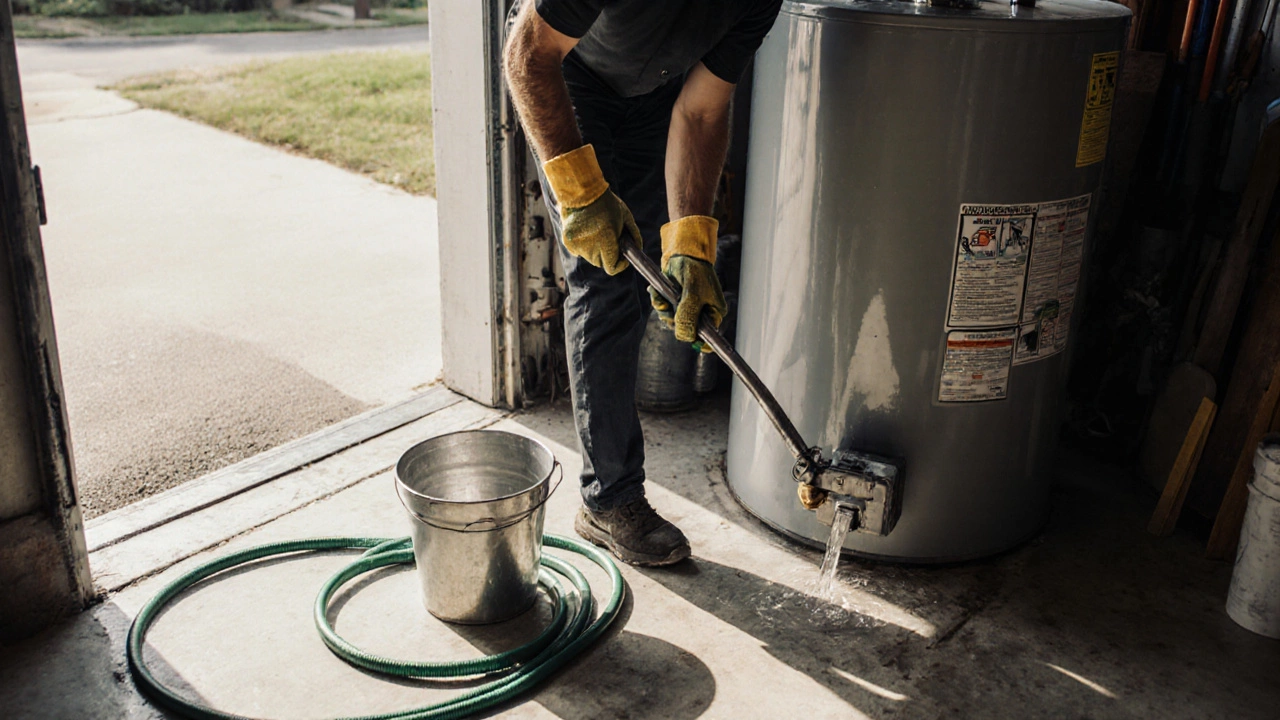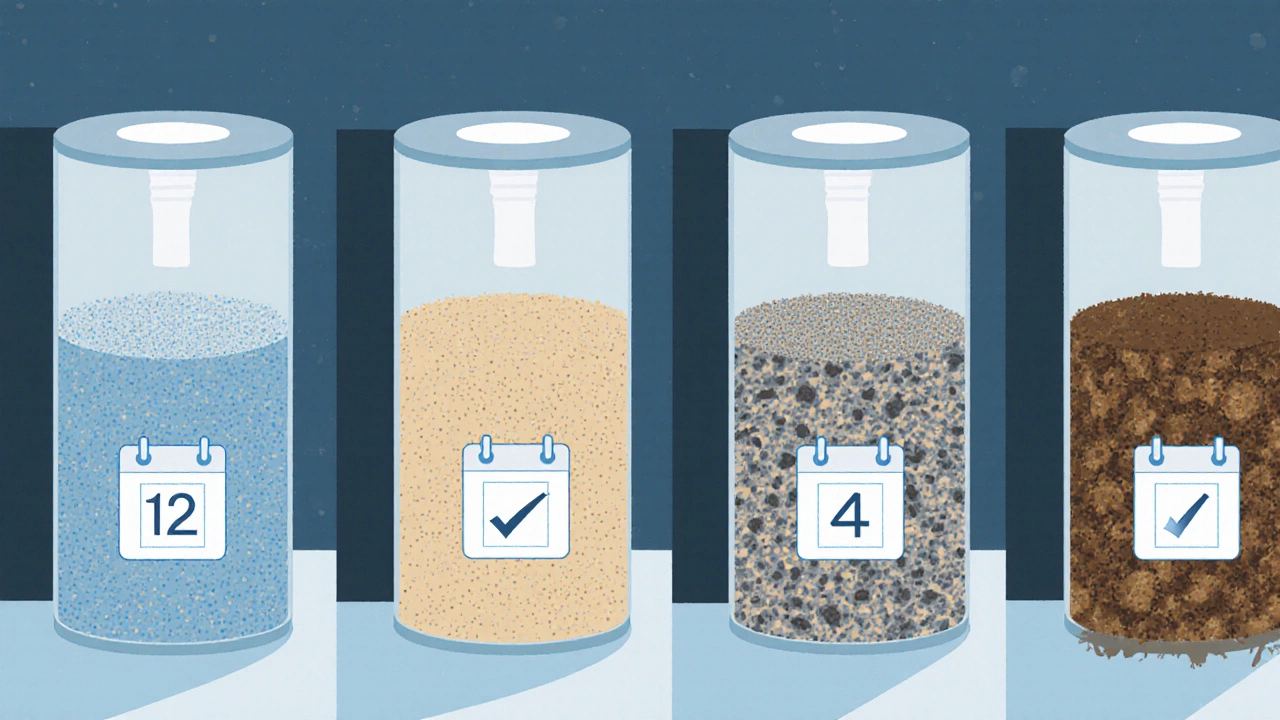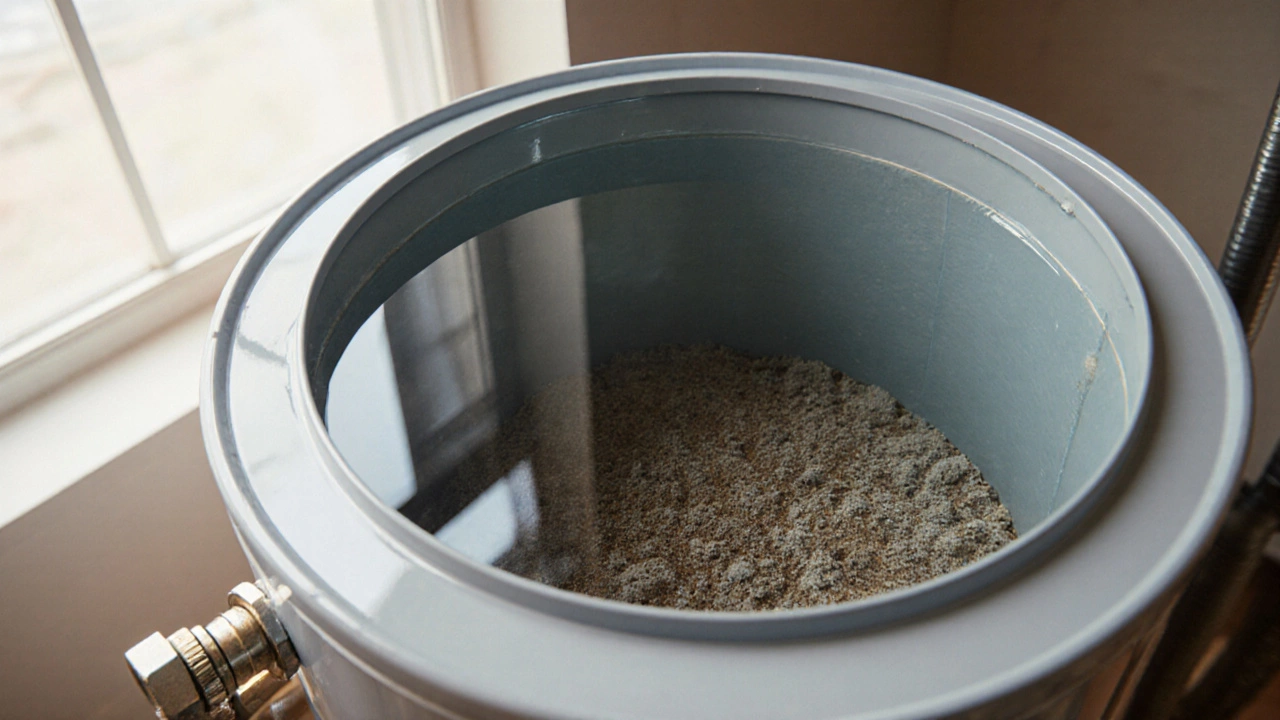Water Heater Flushing Frequency Calculator
Calculate Your Flush Schedule
Enter your water hardness level and usage pattern to determine optimal flushing frequency.
Your Recommended Flush Schedule
Important Notes
- Hard water requires more frequent flushing due to mineral buildup.
- Larger households may need more regular maintenance.
- Always follow manufacturer guidelines for best results.
- Consider a water softener if your hardness exceeds 120 mg/L.
When it comes to keeping your water heater is a domestic appliance that stores and heats water for household use, regular maintenance can save you from costly repairs.
Why Flushing Matters
Over time, sediment is a layer of mineral particles that settles at the bottom of the tank and acts like insulation. That insulation forces the heating element or gas burner to work harder, which raises energy use and shortens the unit’s lifespan.
Besides higher bills, sediment can cause strange noises, reduced water pressure, and even rust‑colored water if it stirs up the tank’s interior.
How to Decide the Right Frequency
The ideal interval depends on three main factors:
- Water hardness: Hard water leaves more mineral deposits. If your area has water hardness above 150mg/L, you’ll need to flush more often.
- Usage patterns: A family that showers daily burns through hot water faster than a single occupant.
- Manufacturer recommendations: Some brands suggest a yearly flush, while others specify six‑month intervals for hard‑water regions.
When you combine these variables, a simple rule of thumb emerges: water heater flushing once a year works for most soft‑water households, while hard‑water homes should aim for every six months.

Step‑by‑Step Flushing Procedure
Gather these tools before you start:
- Garden hose long enough to reach a drainage point
- Bucket (optional, for catching any stray water)
- Adjustable wrench
- Protective gloves
Follow these steps carefully:
- Turn off the power or gas supply. For electric units, switch off the breaker; for gas, set the thermostat to “off”.
- Close the cold‑water inlet valve located near the top of the tank is a the insulated cylinder that holds heated water.
- Connect a garden hose to the drain valve is a a valve at the bottom of the tank that releases water and run the hose to a safe drainage spot.
- Open the drain valve and let the water flow. You’ll hear a hissing sound as air enters the tank.
- Once the water slows, briefly open the cold‑water inlet to stir up remaining sediment. Keep the drain valve open so the dirty water flushes out.
- Repeat the brief fill‑and‑drain cycle 2‑3 times until the water runs clear.
- Close the drain valve, remove the hose, and reopen the cold‑water inlet. Let the tank fill completely.
- Restore power or gas, then set the thermostat to a safe temperature (usually 120°F or 49°C).
After the flush, take a moment to inspect the anode rod is a a sacrificial metal rod that reduces corrosion inside the tank. If it looks heavily corroded, plan to replace it within the next year.
Signs You Need an Immediate Flush
Even if you’re on a regular schedule, look out for these red flags:
- Rattling or popping noises when the heater fires up
- Rusty or cloudy water from hot taps
- Noticeable drop in hot‑water pressure
- Higher than usual energy bills
Maintenance Checklist Beyond Flushing
Keeping a simple checklist handy can prevent many issues:
- Check the temperature thermostat is a a control that sets the water’s target temperature annually; adjust if set above 120°F.
- Inspect the vent is a the exhaust pathway for gas‑fired water heaters for blockages or rust.
- Test the pressure‑relief valve by lifting its lever; water should discharge briefly.
- Review the water‑hardness level from your local municipal water supply is a the public system that provides water to homes and businesses. If it spikes, consider a water softener.

Comparison Table: Flush Frequency by Water Hardness
| Hardness (mg/L CaCO3) | Recommended Flush Interval | Typical Sediment Build‑up |
|---|---|---|
| 0‑60 (soft) | Every 12months | Light dust‑like particles |
| 61‑120 (moderate) | Every 9months | Fine sand‑like sediment |
| 121‑180 (hard) | Every 6months | Coarse mineral scale |
| 180+ (very hard) | Every 4months | Thick crust that can clog the dip tube |
Pro Tips to Get the Most Out of Each Flush
- Use a bucket under the hose to catch water if you can’t direct it to a drain.
- Consider installing a small water‑softening cartridge on the inlet line for especially hard water.
- Schedule the flush during a low‑usage period, like evenings, to avoid running out of hot water.
- Document the date of each flush in a home‑maintenance log; patterns become easy to spot.
Frequently Asked Questions
Can I flush a gas‑powered water heater the same way as an electric one?
Yes. The steps are identical, but remember to turn off the gas valve and set the thermostat to “off” before you begin. After the flush, relight the pilot if needed.
What temperature should I set my water heater to after flushing?
Most experts recommend 120°F (49°C). It’s hot enough for comfort, reduces scald risk, and saves energy.
How do I test my water’s hardness?
You can buy a simple test kit at hardware stores or request a water‑quality report from your municipal provider. Results are expressed in mg/L of calcium carbonate.
Will flushing remove rust from the tank?
Flushing clears loose sediment, but if the tank walls are corroded, you’ll still see rust in the water. In that case, consider replacing the unit.
Is a water softener necessary for a water heater?
A softener helps keep mineral buildup low, extending the life of the heater. It’s especially worthwhile in regions with hardness above 120mg/L.
